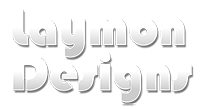One of the most common issues that I run into among new or potential clients is terminology and the ability to understand web design concepts and elements. In this article, I’ll attempt to define some key terms and concepts.
HTML – this is the foundation of any Web page. 15 years ago, most basic websites were built almost entirely with HTML code. This is no longer the case, however, as Web technologies have evolved past simple HTML code.
Content Management System (CMS) – A content management system is typically a database driven website, such as WordPress and Joomla, which can typically be launched and managed easily by “non-designers.” To fully implement and customize a CMS, it’s recommended that you have a good understanding of HTML and CSS, as well as other scripting languages, such as JavaScript and JQuery, however basic sites can easily be launched and maintained with only basic computer and technical skills.
CSS – CSS is HTML’s cool younger brother. You know… while HTML is busy studying for his trig final, CSS joined a band and wears hemp shoes. Basically, CSS is how you will format and lay out your website. Many very effective websites are made simply of HTML and CSS.
Web Hosting – Even if you already have your own site, you still must have it hosted. Think of it as the actual property where your website actually sits. Somewhere, there’s a web-server that actually holds your website and allows other viewers to see your site. You typically pay “rent” for web hosting, just as you’d pay rent for an apartment or office space. Website hosting typically starts as low as $3.99 per month, and can cost over $1,000 per month for some websites, depending on the services provided (don’t worry… this is not typical).
Web Server – Just as I explained in the previous term, a Web server is the actual computer that will actually “host” your site. It’s a computer that is programmed to host your site, as well as probably dozens or hundreds of other sites. Some clients will ask me if they can just use their own computer as a Web server. Technically, the answer is yes, but I don’t think that there’s enough space on the Internet to explain why this is a VERY BAD idea, and really not feasible.
Domain Name – This is also known as your URL, which is your “dot-com”. For example, my domain name is www.laymondesigns.com. Domain names typically cost between $9-12 per year to buy, but some people have a tendency to purchase domain names and attempt to resell them at a profit, similar to real estate. I have heard of some domain resellers to charge as much as $1,000 just to buy domain name that would cost $9.99 if they had not already purchased it. I refer to these people as “turds”.
Web crawler – Also known as a “spider”, a web crawler is a program that search engines use to search and index websites. When a crawler lands on my website, it looks for common key words that are used throughout the site, and follows the links from one page to another, then follows my outgoing links to “crawl” other websites. Which brings us to….
Search Engine Optimization – is the process of impressing these crawlers, and convincing them that YOUR SITE deserves to be at the top of search engines. Search engines use algorithms (insert joke about a former VP’s dancing ability here… get it?? AL – GORE – RHYTHMS… Don’t tell me you didn’t chuckle right before you rolled your eyes!!). Anyway, the algorithms evaluate dozens of factors, such as:
- update frequency,
- use of keywords,
- popularity of site,
- CSS design and limited use of tables;
- limited use of Flash,
- length of time that site has been in existence,
- alternate text,
- just to name a few.
Well, that’s enough for now. More to come.
